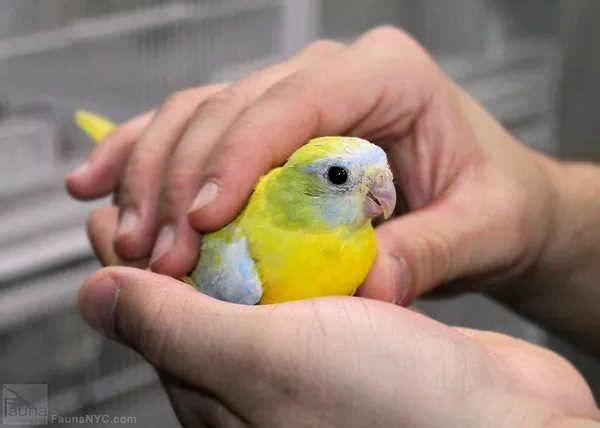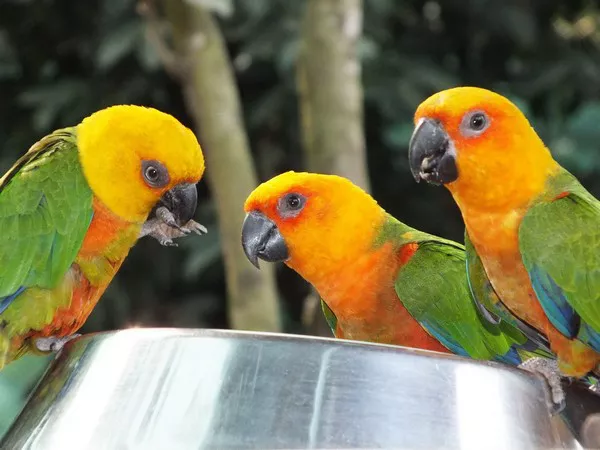Indian Ringneck Parrots, scientifically known as Psittacula krameri, are captivating and intelligent birds that have captured the hearts of bird enthusiasts worldwide. These striking parrots are renowned for their vibrant plumage, charming personalities, and exceptional mimicking abilities. To truly appreciate these birds, it’s essential to understand their natural habitat and where Indian Ringneck Parrots live in the wild. In this comprehensive guide, we will explore the native range and habitat of these delightful parrots, shedding light on their ecological niche and adaptability.
Native Range of Indian Ringneck Parrots
Indian Ringneck Parrots are native to a vast region spanning parts of South Asia. Their natural range extends across countries such as India, Pakistan, Sri Lanka, and Bangladesh. Within this region, they inhabit a variety of ecosystems, showcasing their remarkable adaptability.
Habitat and Ecosystems
Indian Ringneck Parrots are highly adaptable and can be found in diverse habitats within their native range. Here are some of the ecosystems where these parrots live:
Forests: Indian Ringneck Parrots are commonly found in tropical and subtropical forests. They thrive in both dense evergreen forests and deciduous woodlands.
Grasslands: These parrots are known to inhabit grassy areas and savannas, especially during their foraging expeditions. They often seek out areas with abundant food sources like seeds, fruits, and grains.
Agricultural Lands: Indian Ringneck Parrots have adapted to living in agricultural landscapes, including farmlands and orchards. They are attracted to crop fields where they can feast on cultivated grains and fruits.
Urban and Suburban Areas: In some regions, Indian Ringneck Parrots have successfully adapted to urban and suburban environments. They are known to nest in trees and buildings in cities, providing a unique opportunity for bird enthusiasts to observe them.
Wetlands and Riparian Areas: These parrots are also found near wetlands, rivers, and other water bodies. They may forage for food and find suitable nesting sites in these locations.
Ecological Niche and Diet
Indian Ringneck Parrots are primarily herbivorous and have a varied diet consisting of fruits, seeds, nuts, and grains. Their adaptability to different ecosystems is partly attributed to their diverse dietary preferences. They are also known to feed on flowers, buds, and even nectar from various plant species.
These parrots play a crucial role in their ecosystems as seed dispersers. By consuming fruits and seeds from various plants, they assist in the natural regeneration of vegetation in their habitats.
Breeding and Nesting
Indian Ringneck Parrots are cavity-nesting birds, which means they seek out hollow spaces for nesting. In their natural habitat, they may choose tree hollows, cliff crevices, or even abandoned buildings for nesting sites. They are known to lay clutches of eggs, typically ranging from 2 to 6 eggs, depending on factors such as food availability and environmental conditions.
Adaptations and Behavior
Indian Ringneck Parrots are highly adaptable and have evolved certain behaviors and physical traits to thrive in their diverse habitats. Some notable adaptations include:
Coloration: Their green plumage serves as camouflage in dense forests, helping them blend in with their surroundings. However, their vibrant and contrasting colors become more apparent when they are in flight.
Strong Beaks: Indian Ringneck Parrots have strong beaks that are well-suited for cracking open seeds, nuts, and fruits, allowing them to access a wide range of food sources.
Social Behavior: These parrots are social birds and often form flocks, especially during the non-breeding season. This behavior enhances their safety and access to food.
Migratory Patterns: In some regions, Indian Ringneck Parrots exhibit seasonal movements in search of food and suitable nesting sites.
Conclusion
Indian Ringneck Parrots are remarkable birds with a wide distribution across South Asia. Their adaptability to various ecosystems, including forests, grasslands, urban areas, and agricultural lands, reflects their resilience and resourcefulness in the wild.
Understanding the natural habitat and behavior of Indian Ringneck Parrots not only enhances our appreciation for these birds but also provides valuable insights for their care in captivity. Whether in the wild or as beloved pets, these parrots continue to captivate us with their beauty, intelligence, and unique adaptations to their ever-changing environments.
Recommended reading:
























